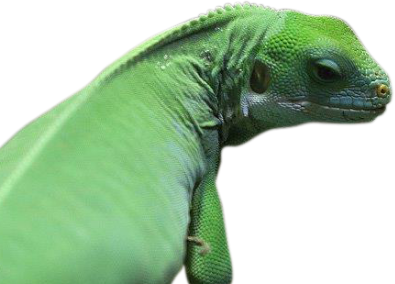Darwin’s Rhea
KEY FACTS
-
LATIN NAMERhea pennata
-
BIOMEGrassland and open scrubland.
-
CLASSBird
-
ORDERRheiformes
-
CONSERVATION STATUSLeast Concern
COME AND FIND ME AT..
The South American Habitat

About the Darwin’s Rhea
Named after the famous naturalist, they are also known as the Lesser rhea. Their plumage is greyish brown with white tips. They have a long neck, powerful legs and their lengthy flightless wings are used not only for balance but also for changing direction when fleeing from predators. Darwin’s rhea has three toes on each foot, unlike their close relative, the ostrich who has two. They weigh between 15 and 30 kg and can be up to 1 metre in height.
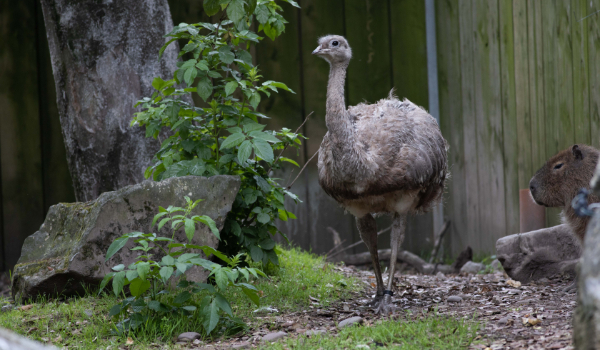
Habitat
These ratites (flightless birds) roam the open pampas and scrubland of the Andean plateau and Patagonia, South America. During the mating season they tend to stay close to rivers, lakes, and marshes even though their natural home range is quite arid! The Lesser Rhea comprises of 3 subspecies , all of whom are distributed across the bird’s natural living range.
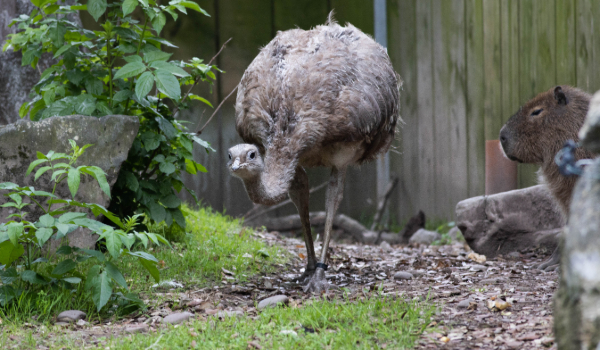
Wild Notes
Darwin’s rheas are opportunistic omnivores. They feed off a wide array of vegetation including leaves, roots, fruit, and seeds but will also occasionally eat small vertebrates and insects. The vast majority of their water source originates from the plants that they eat.
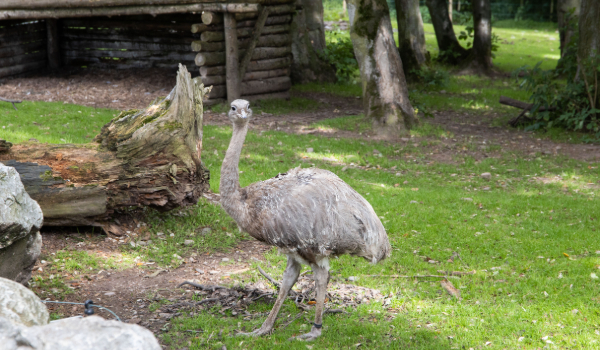
Conservation
Rheas are hunted for their meat and skins which are used in the production of leather goods. Their feathers and eggs are also collected for a variety of purposes. Other threats include fragmentation of their habitat due to conversion to farmland. The southern subspecies remains relatively widespread with a healthy population, but the situation for the two northern subspecies is more worrying, with their combined population estimated as only being in the hundreds.
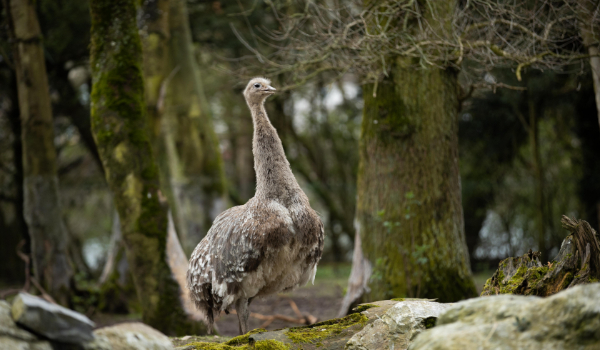
Did You Know?
They are polygamous- with males having multiple mates.
Males build a flat, hollow nest, in which several females lay up to 30 eggs; only the male is responsible for brooding and rearing the chicks with an incubation period of 36–45 days.
Males will aggressively protect the eggs from any possible threats including attempts by female rheas to lay additional eggs. Those eggs are laid close to the original nest and the male will roll the nearest ones in to be incubated. Any eggs that are too far from the nest will attract flies at they start to rot. These flies are an important source of protein for the male and the chicks on hatching.
The Fota Connection.
Fota welcomed two male rheas to the South American exhibit in 2019. To-date, the species has settled in well with the various species with whom they share a habitat including the Brazilian tapirs and capybaras.
The birds can often be seen displaying their plumage to passing visitors. Currently, an estimated 100 Lesser Rheas are held in a number of zoological collections across the globe.





